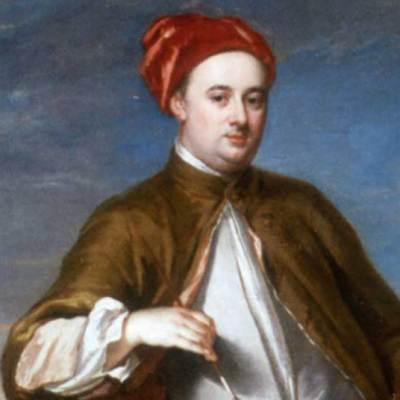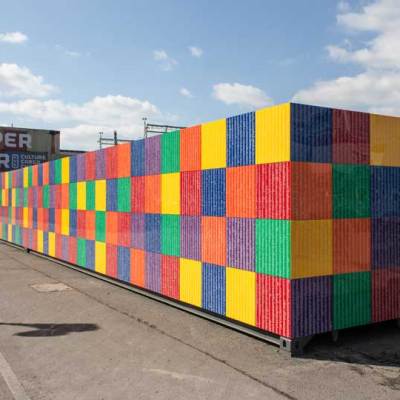‘Renaissance Impressions’, at the Royal Academy of Arts in London (until 8 June), plucks some of the world’s finest chiaroscuro woodcut prints from the ample collections of the artist Georg Baselitz, and the Albertina in Vienna.
The chiaroscuro technique was first developed around 1508 by the steady hands of Lucas Cranach the Elder and Hans Burgkmair, thanks in part to the lavish patronage of the court of Emperor Maximilian I.
St George and the Dragon (c. 1508–10), Hans Burgkmair the Elder. Collection Georg Baselitz. Photo Albertina, Vienna

The benefits were obvious. New subtleties of tone provided the illusion of depth and thus allowed for more dramatic compositions. Burgkmair’s innovative portrait of Hans Paumgartner (1512), for example, is impressive for its exquisite level of detail.
Aside from the practical benefits, the RA is keen to remind us that this new technique was also ‘painterly’. And indeed it was. Domenico Beccafumi’s Group of Men and Women (c. 1545–47), to name but one, has the deceptive spontaneity of a watercolour sketch. But those who have paid to visit an exhibition consisting entirely of Renaissance prints are unlikely to need the RA’s constant reassurances that the artworks relate to a more familiar medium.
From Augsburg, the chiaroscuro woodcut headed south, where, true to form, the Italians upped the sensuality and ditched the grotesque. The likes of Ugo da Carpi, Antonio da Trento and Niccolò Vicentino injected the medium with new levels of fluidity.
These Italian pioneers are painted here in a rather roguish light. Da Carpi apparently conned his way into the Venetian court, claiming to have invented the technique, and, according to Vasari, Antonio da Trento broke into Parmigianino’s home in order to steal source material.
Perhaps such blatant opportunism stifled their creative flare. Several of these early Italian chiaroscuro prints, such as da Carpi’s rather anodyne woodcut of Raphael’s The Death of Ananias (1518), lack some of the originality, charm and freedom demonstrated by Italian printmakers from previous generations, such as Baccio Baldini or Francesco Rosselli.
The Italian woodcut steadily matured, however, and the unknown author of the Tree with Two Goats (c. 1530–40), for example, clearly revelled in new-found freedoms of expression. By the end of the century, the works of Andrea Andreani, such as Virtue Assailed by Love, Error, Ignorance and Opinion (1585) and the magnificent Triumphs of Caesar (1599), expertly fused Northern graphic clarity with Southern tonal awareness.
Fascinating though this technical progression is, overall the exhibition is too reliant on process. This emphasis on technique is to the regrettable, and near total, neglect of function. Why were these prints made? Who bought them? What were the wider implications of this new cultural mobility?
Rape of a Sabine Woman (1584), Andrea Andreani, after Giambologna Collection Georg Baselitz. Photo Albertina, Vienna

Despite being more of a how-to guide than a philosophical examination of the work of art in the age of the woodcut reproduction, ‘Renaissance Impressions’ is a welcome opportunity to enjoy the kind of world-class prints often consigned to the dusty draws of an inaccessible print room.
‘Renaissance Impressions’ is at the Royal Academy of Arts, London, until 8 June.





